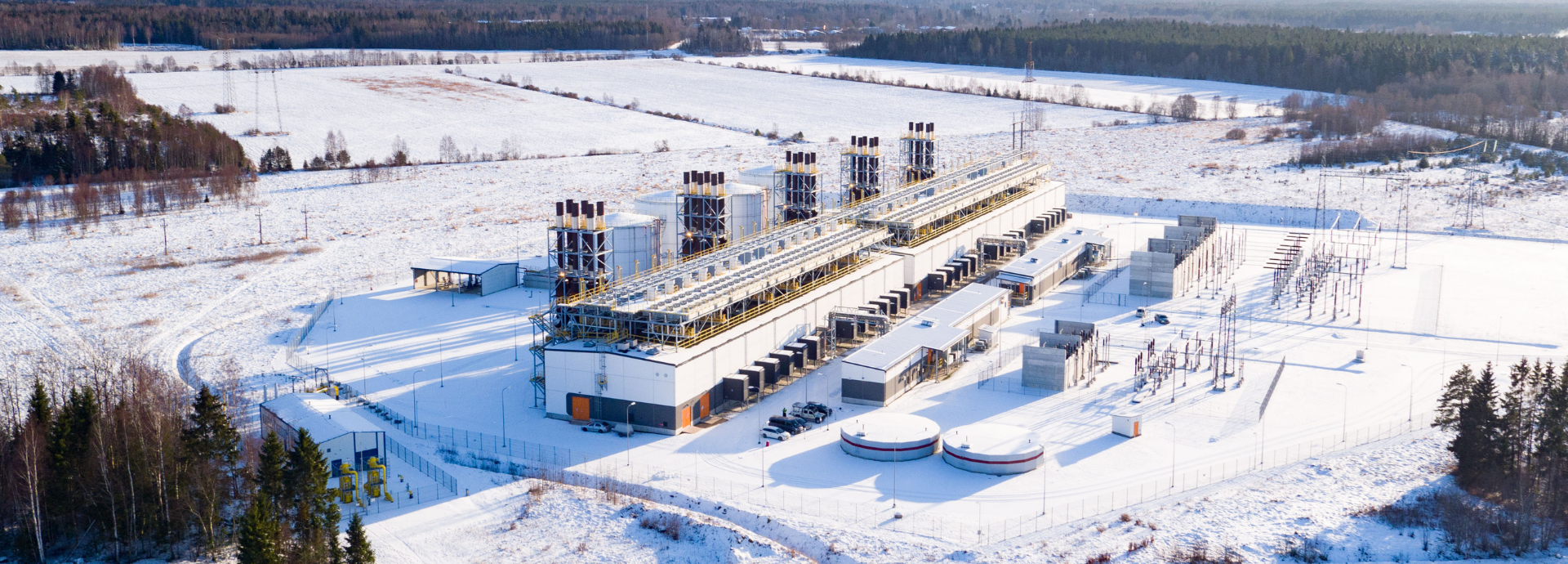

Flexible and quick emergency reserve power plant to prevent blackouts in Kiisa, Estonia
| Who | Elering |
| What | 250 MW emergency reserve power plant |
| Where | Estonia |
| How | EPC (Engineering, procurement & construction) |
This is what we achieved
MW of electrical output
operating hours on average per year
Wärtsilä 34DF dual-fuel engines
For us, the specific technology was not so relevant. We had end results that needed to be met, and Wärtsilä's engines simply offered an unrivalled solution.
How we did it
Challenge
Extremely fast ramp-up time to comply with grid requirements
Ability to restart the whole national grid in case of a total blackout
Minimising the need for on-site operating personnel
Extreme ambient conditions -80ºC variance between summer and winter temperatures
Solution
Internal combustion engines with the best ramp-up capability in the market (>100%min)
Blackout capability: no need for electricity to start-up
Internal combustion engines insensitive to extreme conditions
Fully automated operation, no on-site personnel needed
Benefit
True stability for the grid, ability to fill in immediately in case of failure
Safety and stability, the Kiisa plant can over the loss of the biggest generation unit of the country
All-year round reliability
Cost decrease, personnel focused on key tasks and minimised price for reserve power

The main details
| Customer | Elering (Utility / TSO) |
| Type | Wärtsilä 34DF grid stability / emergency multi-fuel power plant |
| Operating mode | Peak load / standby & emergency |
| Gensets | 27 x Wärtsilä 20V34DF |
| Total output | 250 MW |
| Fuel | Natural gas & LFO |
| Scope | EPC (Engineering, Procurement & Construction) |
| Delivered | 2013 & 2014 |

Would you like to know more?
Contact us
Fill in a contact form and our experts aim to be in contact within 1-2 business days. Contact us »
Read our brochure
Read about our solutions to get all the details.
Related solutions and services
Related materials
Related press releases
Energy security power plant supplied by Wärtsilä to be inaugurated today in Estonia
Wärtsilä to deliver two major dynamic grid reserve power plants to secure electricity supply in Estonia


.tmb-448x262.png?Culture=en&sfvrsn=7d8ce645_2)